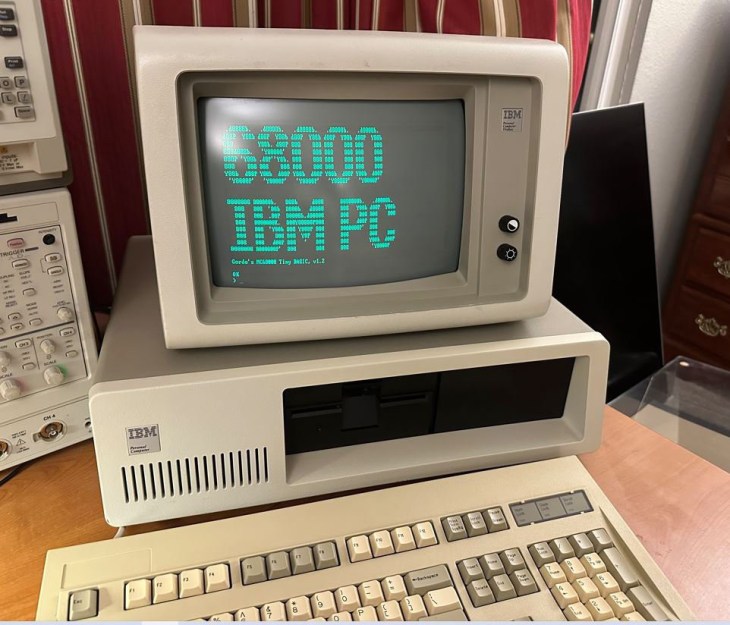IBM PC Runs BASIC With Motorola 68000 CPU Upgrade

Although ARM CPUs have been making headway in several areas of computing over the last decade or so, the vast majority of desktop, laptop and server CPUs are still based on the x86 architecture. How that came to be is no secret, of course: IBM chose the Intel 8088 to power its model 5150 PC back in the early 1980s, and since it became the dominant PC platform, everyone else followed suit. But what if IBM’s purchasing department had got a good deal at Motorola instead? [Ted Fried] has been experimenting with that scenario, by equipping an IBM PC with a 68000 CPU.
To be fair, he didn’t use an actual Motorola chip; instead, he emulated a 68k core on a Teensy 4.1 and implemented the 8088’s bus interface on its pins. The emulated core does exactly the same thing an actual CPU would do, while the rest of the computer works the same way it always did – data is stored in the motherboard’s DRAM chips, keystrokes are processed by the standard 8255 chip and progam output is displayed on the monitor through the MDA video card.
 The biggest problem inherent in performing such a heart transplant is that there’s no software for the resulting system: standard PC programs won’t run on the CPU, while software made for 68000-based computers can’t handle the IBM’s input and output devices. [Ted] therefore decided to use 68000 Tiny Basic, which is a minimalist version of BASIC designed for 68000-based single-board PCs, and adapt it to his specific use case. As you can see in the video embedded below, it works perfectly fine: the PC might as well have been running plain old Microsoft BASIC.
The biggest problem inherent in performing such a heart transplant is that there’s no software for the resulting system: standard PC programs won’t run on the CPU, while software made for 68000-based computers can’t handle the IBM’s input and output devices. [Ted] therefore decided to use 68000 Tiny Basic, which is a minimalist version of BASIC designed for 68000-based single-board PCs, and adapt it to his specific use case. As you can see in the video embedded below, it works perfectly fine: the PC might as well have been running plain old Microsoft BASIC.
While the new CPU should be quite a bit faster than the original Intel chip, a side-by-side performance comparison shows little improvement in the PC’s overall speed. But it’s nevertheless an interesting experiment, and it makes you wonder what today’s PCs would look like, had IBM chosen a different CPU back then. How they settled on the 8088 is actually a fascinating story in itself.
Post a Comment